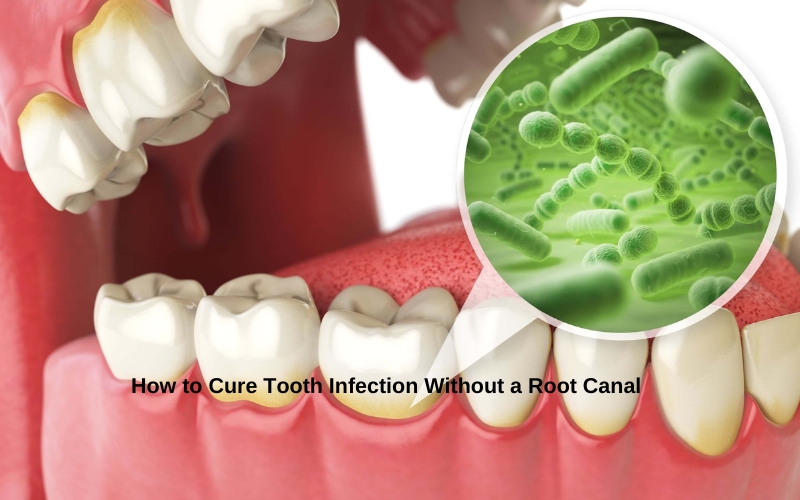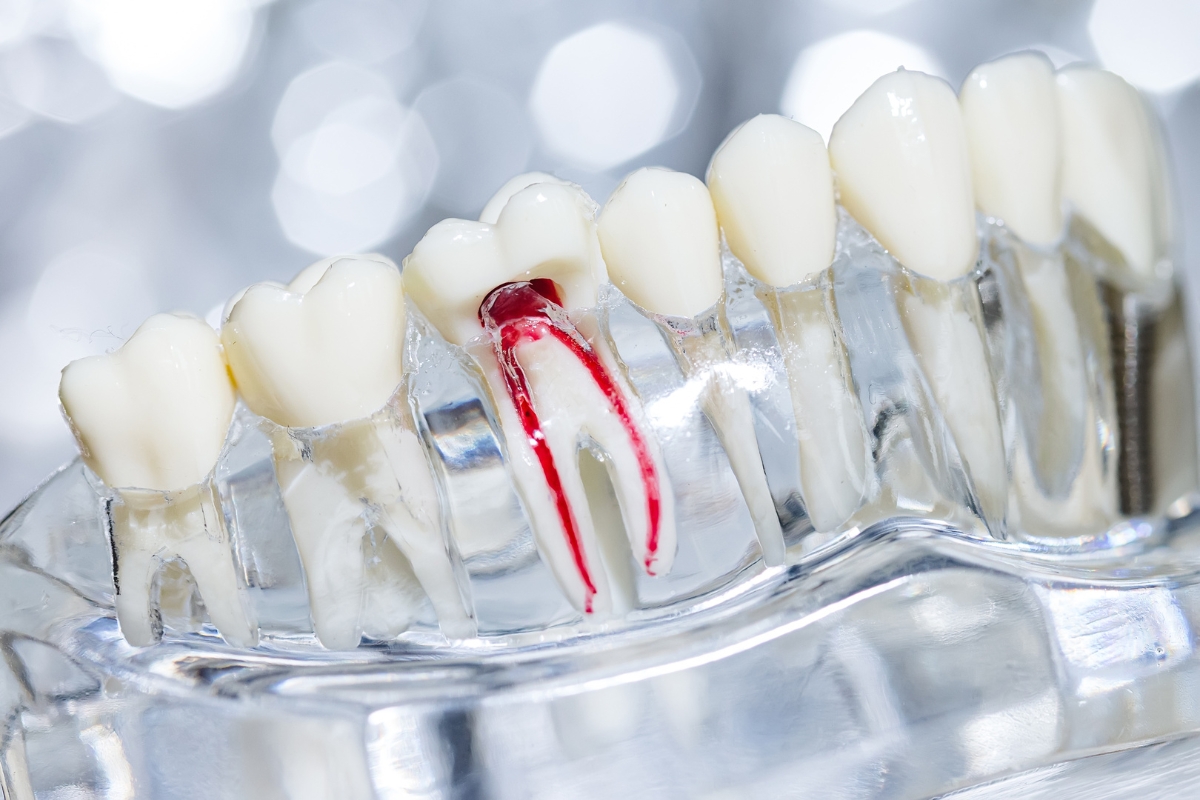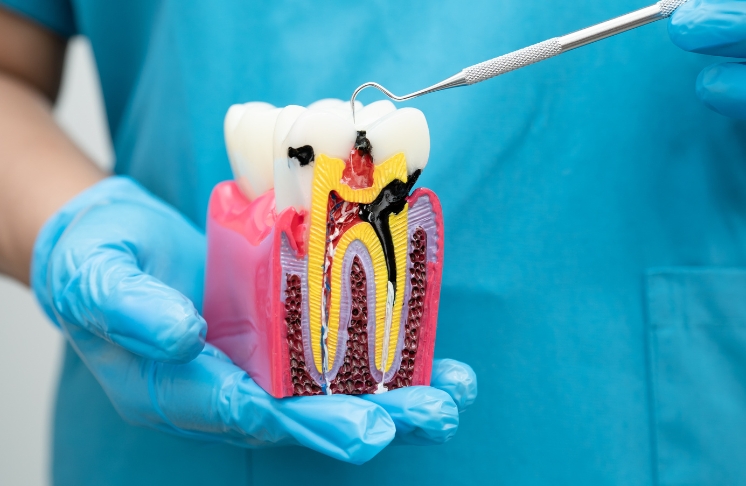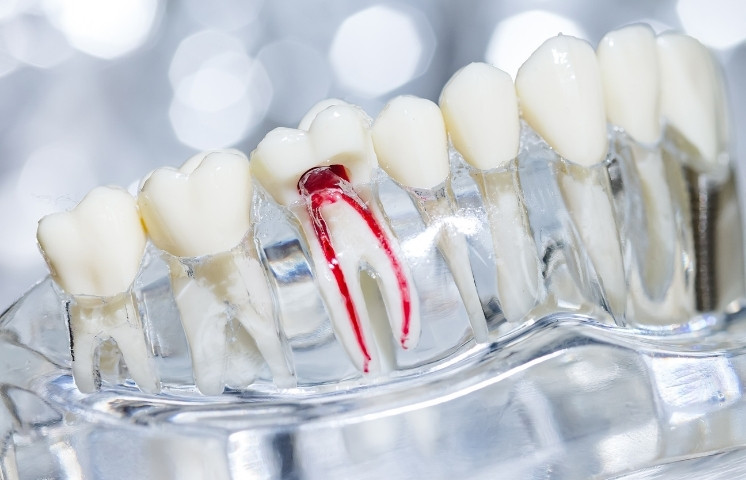We are not a registered Medicare/Medicaid Provider

Tooth infections can be painful and disruptive, and while root canal therapy is a common treatment, many people seek alternatives for managing their condition. This article will explore several ways to treat a tooth infection without using a root canal. However, it is crucial to note that severe infections or those spreading beyond the tooth may require professional intervention. Always consult your dentist for personalized advice and treatment options.
Understanding Tooth Infections
Tooth infections typically occur when bacteria penetrate the tooth’s inner layers, causing inflammation and pus buildup. This condition, known as an abscess, can lead to severe pain and swelling and, if left untreated, can spread to other body areas. Common symptoms include a persistent toothache, sensitivity to hot and cold, swelling of the gums, and sometimes fever.
Why Consider Alternatives to a Root Canal?
Root canal treatment involves removing the infected pulp, cleaning the inside of the tooth, and sealing it to prevent further infection. While effective, it can be costly and lead to complications like tooth brittleness. For those looking for less invasive options, several alternative treatments exist.
Natural Remedies and Home Care
1. Saltwater Rinse
A saltwater rinse is one of the simplest and most effective home remedies for a tooth infection. Salt helps reduce inflammation and can temporarily alleviate pain. Mix a teaspoon of salt in a glass of warm water and swish it around your mouth for about 30 seconds before spitting it out. Repeat this process several times a day.
2. Oil Pulling
Oil pulling involves swishing a tablespoon of coconut or sesame oil in your mouth for 15-20 minutes. This ancient practice helps to “pull” bacteria out of the mouth and can provide some relief from pain and inflammation. After swishing, spit out the oil and rinse your mouth with warm water.
3. Hydrogen Peroxide Rinse
A hydrogen peroxide rinse can help kill bacteria and relieve pain and inflammation. Mix equal parts of 3% hydrogen peroxide with water and swish it around your mouth for 30 seconds. Be careful not to swallow the solution, and rinse your mouth thoroughly with water afterward.
4. Garlic
Garlic has natural antibacterial properties that can help fight infection. Crush a garlic clove to release its allicin content and apply it directly to the affected area. You can also chew on a raw garlic clove or mix it with salt before applying.
5. Cold Compress
Apply a cold compress to the outside of your cheek near the infected area for temporary pain relief. This can help reduce swelling and numb the pain.
Medical Alternatives to Root Canal Treatment
1. Antibiotic Therapy
Antibiotics are often prescribed for dental infections to eliminate bacteria and reduce the infection. Common antibiotics include amoxicillin, clindamycin, and metronidazole. While antibiotics can be effective in managing the infection, they do not address the underlying issue of the damaged tooth and should be used under the guidance of a dentist.
2. Incision and Drainage
If the abscess is accessible, a dentist may perform an incision and drainage procedure. This involves making a small cut in the gum to release the pus and reduce pressure and pain. This treatment is usually accompanied by antibiotics to prevent the spread of infection.
Preventing Future Infections
Maintaining good oral hygiene is essential for preventing tooth infections. Here are some tips to keep your teeth healthy:
- Brush and Floss Regularly: Brush at least twice daily with fluoride toothpaste and floss daily to remove plaque and food particles between teeth.
- Use a Fluoride Mouthwash: Fluoride helps to strengthen enamel and prevent cavities, reducing the risk of infections.
- Limit Sugary Foods and Drinks: Bacteria thrive on sugar, producing acids that can erode enamel and lead to cavities.
- Regular Dental Checkups: Visit your dentist regularly for cleanings and checkups to detect potential issues early.
When to Consider a Root Canal
While these alternatives may help manage symptoms and even treat mild infections, severe cases often require more comprehensive treatment, like a root canal. If the infection is extensive, causing severe pain, or spreading to other parts of your body, seeking immediate dental care is crucial. Root canal treatment in Haymarket is a reliable solution to save the tooth and prevent further complications. Haymarket Dental – Implant, Family, and Cosmetic Dentistry offers comprehensive services for those experiencing severe dental issues, including root canal therapy.
Conclusion
Treating a tooth infection without a root canal is sometimes possible, especially when caught early. Natural remedies, antibiotics, and good oral hygiene can help manage the infection. However, it’s essential to recognize when professional dental treatment is necessary to avoid serious complications. If you’re unsure of the best course of action, consult with a Haymarket Dental – Implant, Family, and Cosmetic Dentistry dentist to discuss your options and ensure your oral health is well managed.



